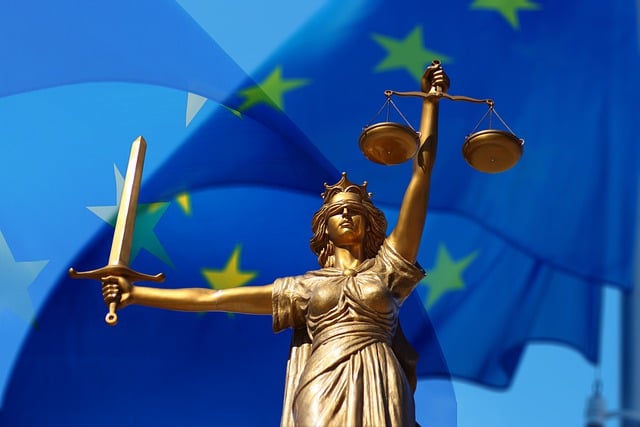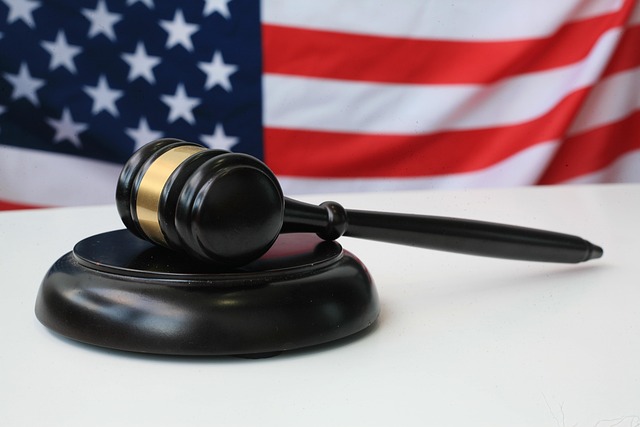Public corruption charges, involving illicit behavior by government officials or powerful individuals like bribery, embezzlement, and abuse of power, significantly impact market integrity. Regulatory bodies worldwide scrutinize financial transactions inspired by international conventions like the UN Convention against Corruption. Case studies like Enron's collapse and Satyam Computer Services' scandal highlight the severe consequences of white-collar crimes, emphasizing the need for stringent corporate governance and transparency. International organizations play a vital role in fighting public corruption through setting standards, facilitating cooperation, and offering support, while advanced data analytics and public awareness strengthen securities exchange regulation, deterring corrupt actors and promoting global market integrity.
“Public corruption charges pose significant challenges to global economies, eroding public trust and undermining market integrity. This article delves into the intricate world of securities fraud, offering a comprehensive guide to understanding public corruption. We explore defining legal frameworks through case studies like Enron Corporation and Satyam Computer Services, providing historical insights on financial misconduct. Additionally, we examine international collaborations in anti-corruption efforts and delve into strategies for prevention and detection, highlighting essential tools in securities exchange regulation.”
- Understanding Public Corruption Charges: Definitions and Legal Frameworks
- Case Study 1: Enron Corporation – A Historical Perspective on Financial Fraud
- Case Study 2: Satyam Computer Services – The Impact of CEO Misconduct
- International Perspectives: The Role of Global Anti-Corruption Organizations
- Strategies for Prevention and Detection: Tools for Effective Securities Exchange Regulation
Understanding Public Corruption Charges: Definitions and Legal Frameworks

Public Corruption Charges refer to allegations of illicit behavior by public officials or those with significant influence in government, often involving the misuse of power for personal gain. This can manifest in various forms such as bribery, embezzlement, and abuse of office. Understanding these charges necessitates a grasp of legal frameworks that define and penalize such acts. Each jurisdiction has its own set of laws and regulations to combat corruption, with many drawing inspiration from international conventions like the United Nations Convention against Corruption.
In the context of Case Studies in Securities Exchange Regulation, public corruption can have significant implications for market integrity. Across the country, regulatory bodies scrutinize financial transactions to detect any signs of illicit activity, ensuring that philanthropic and political communities remain free from corruption. Avoidance of indictment is a key concern for those accused, as convictions can lead to severe penalties including fines, imprisonment, and loss of public office.
Case Study 1: Enron Corporation – A Historical Perspective on Financial Fraud

The Enron Corporation stands as a haunting historical case study in the realm of case studies in securities exchange regulation. This former energy giant crumbled under the weight of an unprecedented track record of financial fraud, bringing to light the insidious nature of white-collar and economic crimes. The story began with promising innovations and ambitious projects, but soon escalated into a complex web of deceit.
Top executives orchestrated a sophisticated scheme involving inflated assets, false accounting practices, and intricate off-balance sheet entities. As the truth unfolded, investors were left reeling from billions in losses, highlighting the devastating impact of such high-stakes cases. This dramatic event prompted regulatory reforms worldwide, underscoring the critical need for stringent oversight and transparency in corporate governance to prevent similar disasters.
Case Study 2: Satyam Computer Services – The Impact of CEO Misconduct

The Satyam Computer Services scandal serves as a stark reminder of how CEO misconduct can significantly impact a company’s reputation and financial stability in the global market. This case study, within the broader context of Case Studies in Securities Exchange Regulation, highlights the importance of corporate governance and ethical leadership. In 2009, Ramalinga Raju, Satyam’s founder and CEO, admitted to inflating the company’s revenues by billions of dollars over several years, leading to a massive stock price manipulation.
The revelation had far-reaching consequences for both the respective business and the regulatory landscape. The scandal resulted in jury trials, increased scrutiny from investors worldwide, and regulatory bodies stepping up their efforts to enforce stricter compliance standards. Satyam’s unprecedented track record of financial integrity was shattered, causing a significant loss of investor confidence. This event underscored the critical role of CEOs in maintaining transparency and ethical practices, shaping future regulations aimed at preventing similar instances of public corruption charges.
International Perspectives: The Role of Global Anti-Corruption Organizations

In the global fight against public corruption, international organizations play a pivotal role in setting standards, facilitating cooperation, and providing support to national efforts. These bodies, such as the International Criminal Court (ICC), the Organization for Economic Cooperation and Development (OECD), and the Global Corruption Barometer, offer valuable resources and expertise in investigating and prosecuting corrupt practices worldwide. By promoting transparency, accountability, and integrity through various initiatives and case studies in securities exchange regulation, these organizations contribute to a more unified approach against corruption.
Through their efforts, global anti-corruption organizations have helped establish robust legal frameworks and strategies for combating not just public corruption but also white-collar and economic crimes. Their success stories, often featuring winning challenging defense verdicts, illustrate the impact of international collaboration. These organizations provide a platform for sharing best practices, conducting thorough research, and offering recommendations to enhance national anti-corruption efforts. Ultimately, their work aims to secure complete dismissal of all charges in high-profile cases, ensuring justice and setting precedents for future investigations.
Strategies for Prevention and Detection: Tools for Effective Securities Exchange Regulation

Effective securities exchange regulation requires a multi-faceted approach to both prevent and detect public corruption charges. One powerful tool is leveraging case studies in securities exchange regulation. By studying high-stakes cases, regulators can identify patterns and implement robust strategies that target vulnerable areas, such as financial reporting transparency and board governance structures. This proactive measure helps create a deterrence mechanism, making it more difficult for corrupt actors to exploit regulatory loopholes.
Across the country, significant strides have been made in this regard, with increased scrutiny on the philanthropic and political communities, where influence peddling often occurs. Advanced data analytics and artificial intelligence play a crucial role in unearthing anomalies and suspicious transactions. These technologies enable regulators to detect patterns indicative of corruption at an early stage, thereby facilitating swift action. The collective efforts of regulatory bodies, coupled with public awareness and engagement, are essential in maintaining the integrity of financial markets and ensuring fair practices for all participants.
Public corruption charges, as exemplified by the case studies of Enron and Satyam Computer Services, highlight the profound impact of financial fraud and CEO misconduct on global markets. These incidents underscore the importance of robust Case Studies in Securities Exchange Regulation and international collaboration through organizations like INTERPOL and the OECD. By understanding definitions, legal frameworks, and implementing preventative strategies, regulators can fortify markets against corruption, fostering transparency and integrity for sustainable economic growth.






